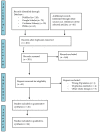Innovative Technologies in the Neurorehabilitation of Traumatic Brain Injury: A Systematic Review
- PMID: 36552138
- PMCID: PMC9775990
- DOI: 10.3390/brainsci12121678
Innovative Technologies in the Neurorehabilitation of Traumatic Brain Injury: A Systematic Review
Abstract
Motor and cognitive rehabilitation in individuals with traumatic brain injury (TBI) is a growing field of clinical and research interest. In fact, novel rehabilitative approaches allow a very early verticalization and gait training through robotic devices and other innovative tools boosting neuroplasticity, thanks to the high-intensity, repetitive and task-oriented training. In the same way, cognitive rehabilitation is also evolving towards advanced interventions using virtual reality (VR), computer-based approaches, telerehabilitation and neuromodulation devices. This review aimed to systematically investigate the existing evidence concerning the role of innovative technologies in the motor and cognitive neurorehabilitation of TBI patients. We searched and reviewed the studies published in the Cochrane Library, PEDro, PubMed and Scopus between January 2012 and September 2022. After an accurate screening, only 29 papers were included in this review. This systematic review has demonstrated the beneficial role of innovative technologies when applied to cognitive rehabilitation in patients with TBI, while evidence of their effect on motor rehabilitation in this patient population is poor and still controversial.
Keywords: innovations in neurorehabilitation; robotic device; traumatic brain injury; virtual reality.
Conflict of interest statement
The authors declare no conflict of interest.
Figures
References
Publication types
Grants and funding
LinkOut - more resources
Full Text Sources


